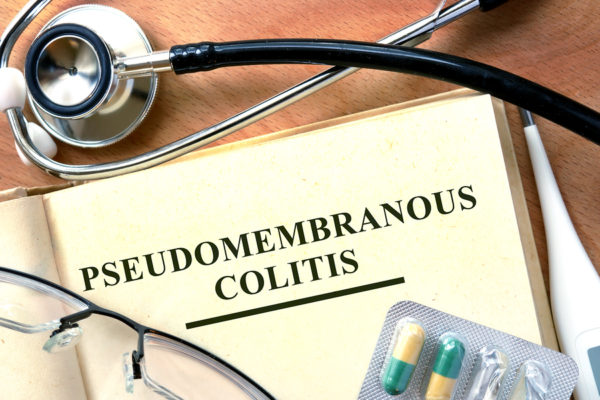C Diff Answers On This Page
C. difficile colitis is one of several labels have been given to the types of conditions sometimes sparked by C difficile infections . These also include antibiotic-associated colitis, C diff colitis, and pseudomembranous colitis (PMC).
C. Difficile Colitis & The Colon
When C Difficile is no longer held in check by other bacteria, that have been damaged by antibiotic treatment, they can begin to cause damage in the large intestine. Two different types of toxin are often produced and these can begin to damage the lining of the intestine, provoke diahrrea and start to cause inflammation. For pictures go here. For medical technical descriptions go here
What causes C Difficile Colitis?
The c difficile bacteria is found in people, animals, the soil and on surfaces that are often in every day use. Many of us may be silent carriers of the bacteria. The natural defences of the body hold it in check and we may find out in the future that it has a role that is positive. Treatment for other conditions is usually the thing that sparks an active c difficile infection. Antibiotics damage the bacteria that holds the c difficile in check and the infection takes hold. Sometimes this is the risk that is taken to treat major illness. There is a concern however that many have c difficile because of over prescription of antibiotics. The drugs used to treat acid reflux are also often cited as a factor active in c difficile infection.
What are the C Diff Colitis Symptoms?
Mild C. difficile colitis may cause: a mild fever, some diarrhea (5-10 watery stools a day), minor abdominal cramps and tenderness. A more severe C. difficile colitis may trigger: a high fever of 102 F to 104 F (39 C to 40 C), severe diarrhea (10+ watery stools a day) which may include blood, and also quite severe abdominal pain and tenderness.
How is C. Difficile Colitis Treated?
There are several ways that it is treated – a fuller guide can be found here. For milder cases a variety of drugs are available. A special immunoglobulin treatement is often used with children. When c difficile does not respond to drugs there is a new treatment known as Fecal Microbiota Transplant that inserts donor feces into the intestine to restore the bacterial balance.
What is Pseudomembranous Colitis?
Pseudomembranous colitis occurs when the colon becomes covered in what appear to be yellow, low bumps to the non-technical eye. These adherent plaques can occur in approximately 50% of cases of C Difficile infection. They are composed of bacteria and other biological debris. They sit atop the normal stomach flora and then begin to merge with and corrode the colon. They can create life threatening illness.
What antibiotics are linked to C Diff Colitis?
There are many drugs that are linked to c difficile but clindamycin and cephalosporins are commonly blamed for infection outbreaks. Some of these drugs are used to help prevent possible infections of wounds after minor medical proceedures – but can exact a high cost for those who develop c difficile.
Is C Diff Colitis Contagious
Like all c difficile there is a risk that others will become contaminated by fecal contaminants on surfaces around a sufferer from an active infection. Discover more detail at our contagious c diff page
Is there a C Diff Colitis Diet
A diet that does not agitate an already upset stomach is vital – read more here
Other Key C Diff Pages
- C Difficile News
- What are C Diff toxins?
- C Diff Symptoms: 4 Key facts you should know now
- C Diff Smell & Color – Discover 6 Key Facts About It Today
- C Diff Bacteria – what is it, how does it spread? A Guide
- C Diff Fecal Transplant Therapy – 7 Key Facts
- C Diff Diet? Aid your recovery, ease your pain and combat further infection
- C Diff Treatment – discover 6 facts you should be aware of
- C Diff diagnosis? – How do you know you have c diff?
- C Diff Contagious – What you must know about preventing an infection
Recent C Diff News[rss feed=”http://feeds.pinboard.in/rss/u:Tahilla/t:cdiff/” num=”6″ excerpt=”false”]
Last Updated on August 10, 2020

